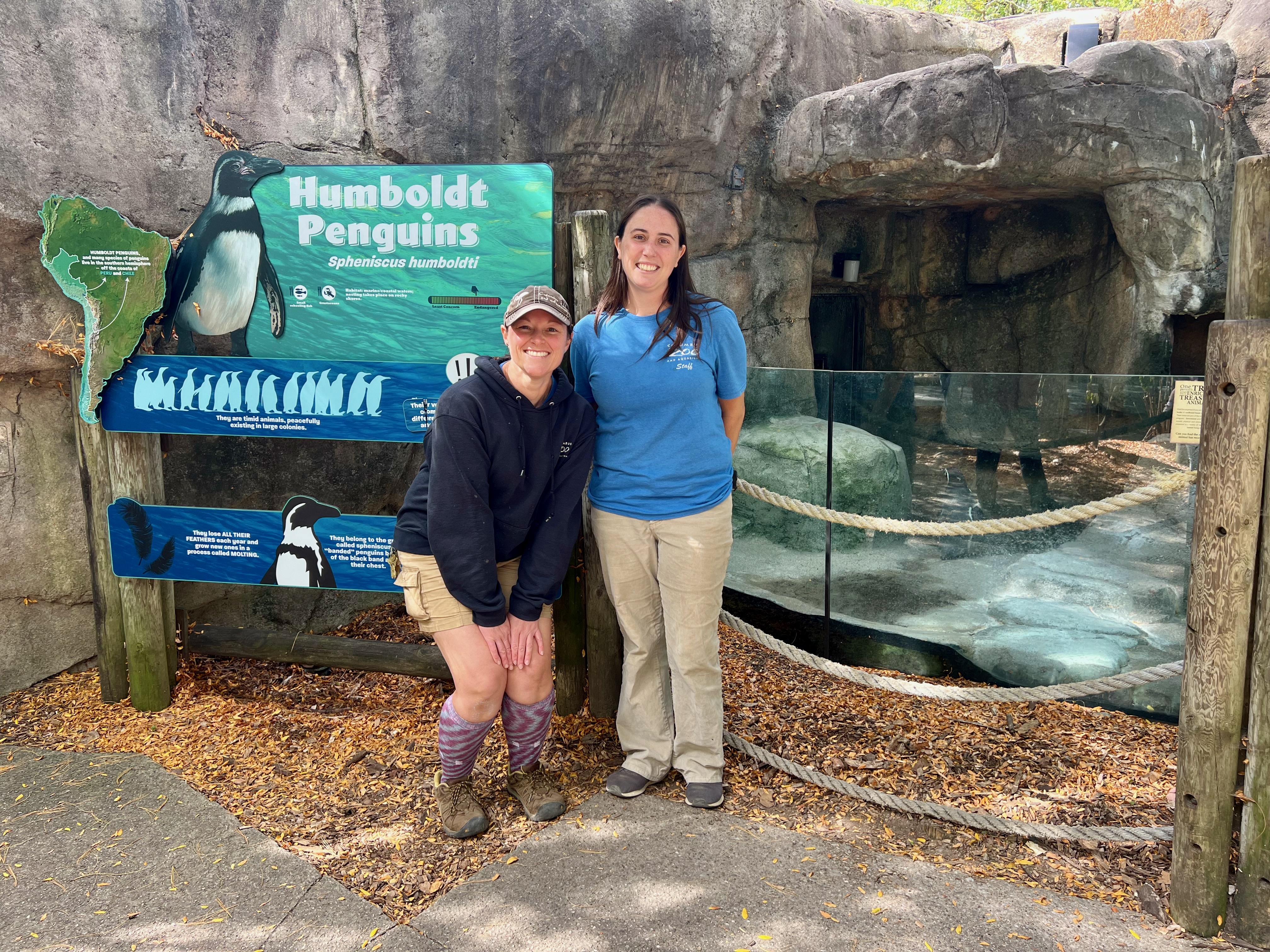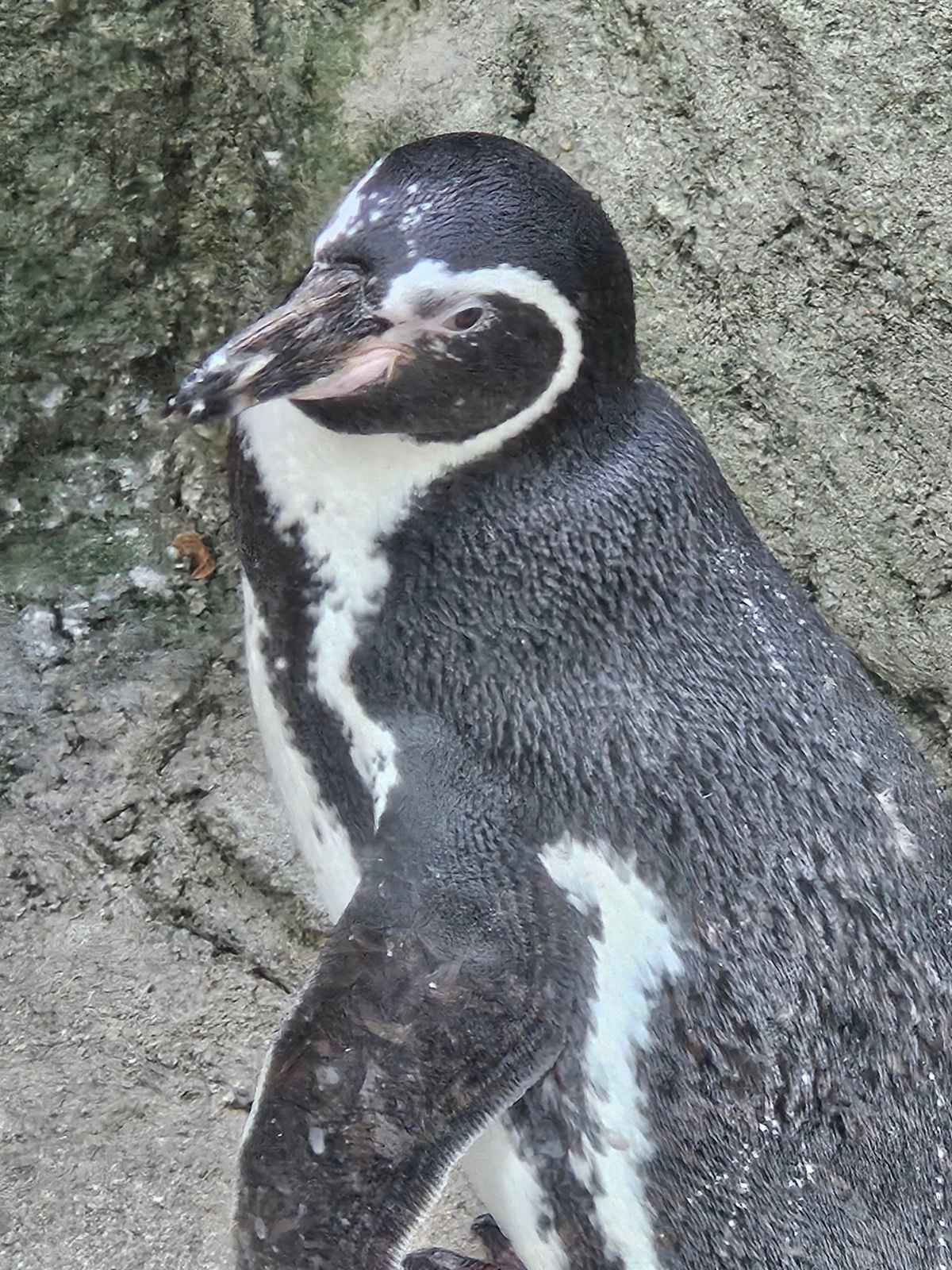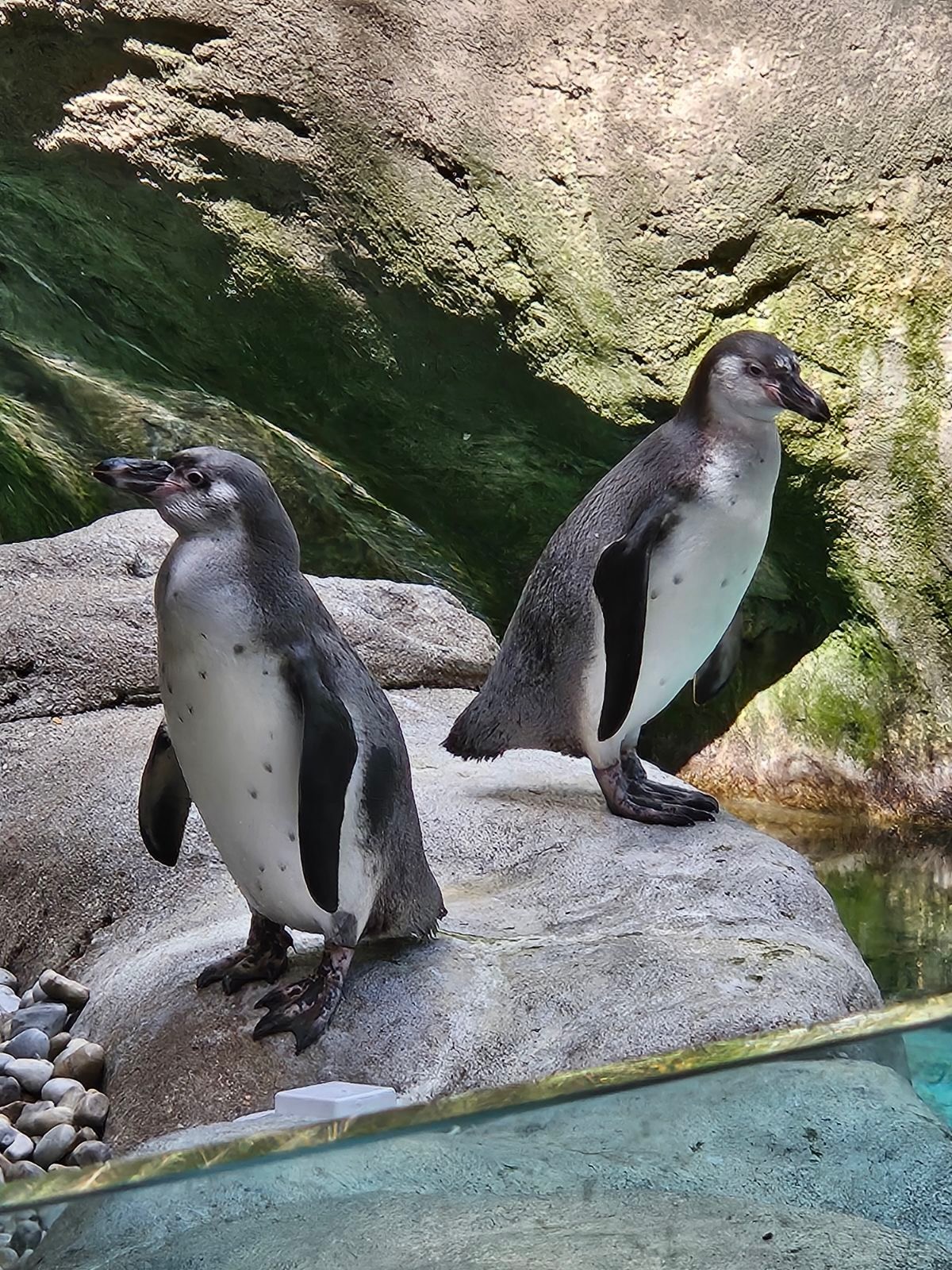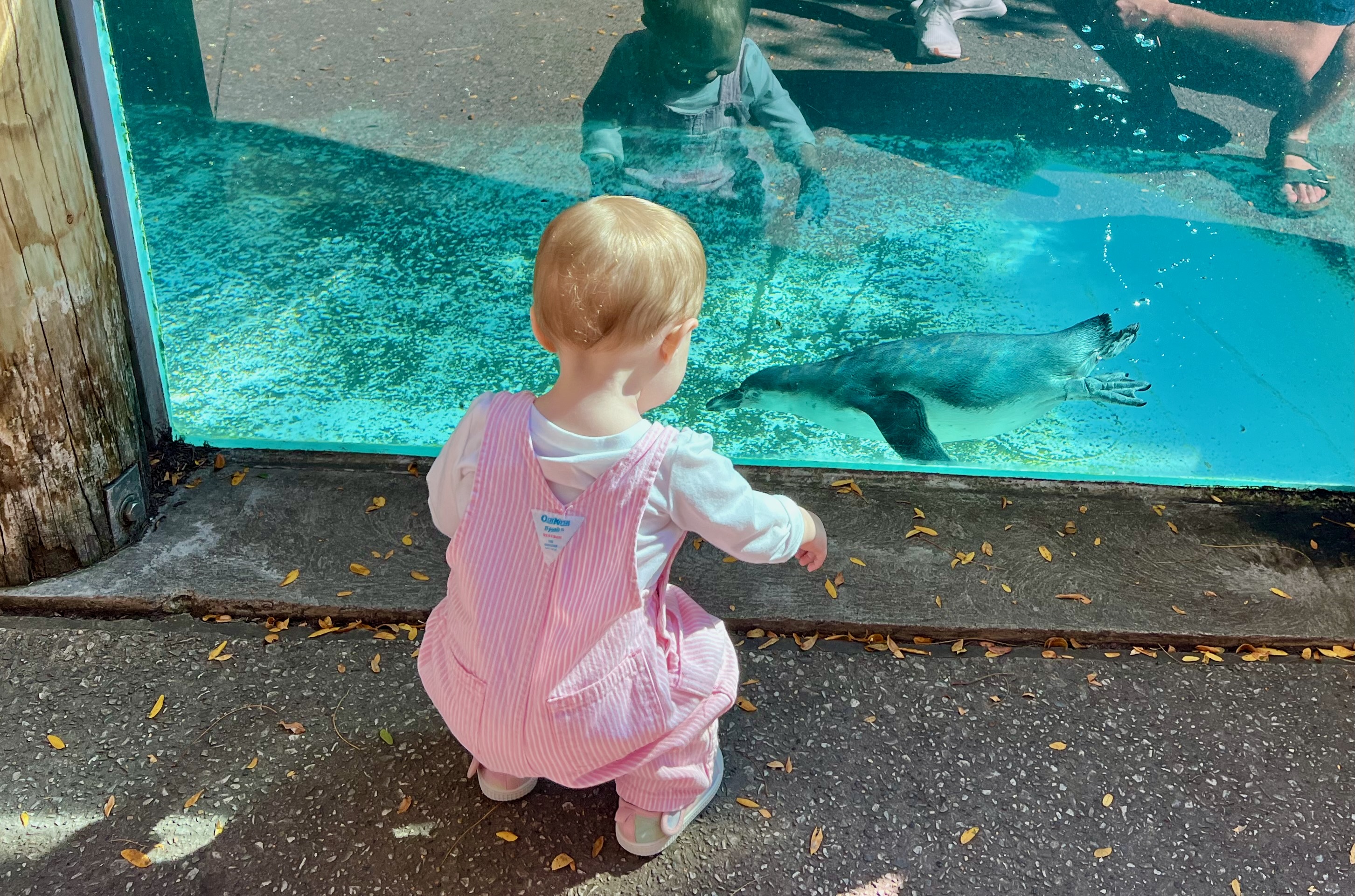As cooler temperatures settle in, many of us reach for coats and blankets—but for penguins, surviving in cold climates is second nature. These remarkable birds are specially adapted to live in harsh environments, and their unique features help them thrive in freezing waters and on icy land. We had the amazing opportunity to visit the Columbus Zoo and Aquarium and learned so much about these amazing creatures from their dedicated keepers Joy Kotheimer and Chelsie Pawlak.
 Humboldt Penguin Keepers Joy Kotheimer, left and Chelsie Pawlak, right. |
Penguin Adaptations: Built for the Cold & Much More!
While we often imagine penguins in icy environments, not all penguins live in the snow year-round. Many, like Humboldt and African penguins, experience warmer climates, yet they are still adapted to survive in cold ocean waters. Penguins have dense layers of feathers, acting like a natural wetsuit. "They have floofy downy feathers close to their body for insulation and warmth," explains Joy. These feathers overlap and repel water, keeping them dry and warm.
Additionally, penguins in warmer areas have developed ways to regulate body heat. "They have skin around their beak that they can lose extra heat from when they get kind of hot," Chelsie notes, highlighting how these birds release heat through exposed skin to stay cool.
 |  |
What Penguins Eat: A Diet of Small Fish
Penguins, especially species like the Humboldt and African penguins, feast on small fish such as sardines and anchovies. However, they can be picky eaters. "We offer anchovies. They did not like sardines," states Joy, highlighting how captive penguins are given a variety of fish to keep their diet balanced.
Sustainable Seafood: How We Can Help
One of the biggest threats to penguins is overfishing, which depletes their food sources. Choosing sustainable seafood is a simple way to make a difference. Organizations like Seafood Watch work to ensure fishing practices don’t harm ocean ecosystems. Supporting sustainable fisheries helps protect the fish populations penguins rely on for survival.
 |
Penguin Communication: More Than Just Squawks
Penguins are known for their loud calls. "We say the couple that yells together stays together," Joy humorously remarked. Penguins use a range of vocalizations to communicate, from bonding with mates to signaling their location. "They might all sound the same to us, but to them, they have very distinct calls."
Protecting Penguins: Simple Steps
Penguins face threats like plastic pollution and oil spills. Reducing single-use plastics and supporting eco-friendly legislation can make a big impact. Groups like SANCCOB work to rehabilitate penguins affected by environmental disasters and help them return to the wild.
Penguins Inspire Resilience
As we bundle up for winter, let’s take a moment to appreciate penguins’ incredible ability to thrive in extreme conditions. By making eco-friendly choices, we can help protect these birds and their habitats for future generations.
For additional updates about the Columbus Zoo’s conservation initiatives, hours, events, and more, follow the Zoo’s social media accounts on Facebook, Instagram, X, and TikTok, and visit us at ColumbusZoo.org. Additional information about the Zoo’s inclusion initiatives can be found by visiting the Zoo’s Accessibility page.
About the Columbus Zoo and Aquarium
Home to more than 10,000 animals representing over 600 species worldwide, the Columbus Zoo and Aquarium leads by making a positive impact on people, wildlife, and wild places. The Zoo complex is a recreational and educational destination that includes the 22-acre Zoombezi Bay water park and 18-hole Safari Golf Club. The Columbus Zoo and Aquarium also manages The Wilds, a 10,000-acre conservation center and safari park located in southeastern Ohio. The Zoo is a wildlife conservation organization with regional, national and global impact, annually supporting conservation and research projects locally and worldwide. For more information, please visit ColumbusZoo.org.
Looking to visit the Columbus, OH area? Check out our sister sites!



